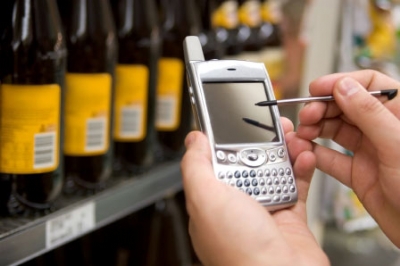Many brands source 80 percent of sales or more from the shelf. However, most export manager market visits include only a quick trip to a store by the airport or distributors office. Formal retail checks may be highly orchestrated, with some sales teams pre-selecting and beautifying stores in advance . This creates a favorable, but unrealistic view of actual store conditions. I will always remember the true story of a former CEO of Clorox visiting a supermarket in Chicago. He entered the store and walked to the primary location of Clorox products. the CEO discovered a letter taped to the shelf fixture. My memory fades but the letters basic message was: “Dear CEO of Clorox. Thank you for coming to our store. Can you remind your representative to change the shelf back to the way it normally is following your visit ?”
Listed below are Export Solutions Ten Tips for generating increased sales everyday through a strategic approach to store checks.
1. Market Wide Retail Audit Creates an Accurate Benchmark
This requires the participation of 2-4 people ( depending on market size) from your company matched by an equivalent number of people from your distributor/retail sales team. Each 2 person team is committed to spend a full day at retail and is assigned a certain city or section of town. Teams can usually visit 10-15 stores per day giving you a broad spectrum of results across the market. Each store should be measured by an identical scorecard. Ideally, the entire group should meet at the end of the day to share observations and next steps.
2. Sync Store Audit dates to Major Events
Schedule retail field audit dates to align with the major events on your annual promotional calendar. High priority events could include new product retail availability, peak seasonality, marketing campaign launch, or a retailer driven merchandising program. Unannounced,independent checks of stores chosen at random allows an unbiased view of your brands presence.
3. Define and Publicize Realistic In-Store guidelines :
The first step is to ensure that each member of your sales team is “crystal clear” on your brands in store objectives. Create a shelf conditions standards book, including photos that can be distributed and shared online. Ensure that each sales representative owns a written copy of your guidelines. Objectives should be realistic based upon current brand turnover not “dreams” based upon higher sales levels from your home market.
4. Store Objectives should be Specific and Measurable
Objectives should be direct, without much wriggle room for interpretation.
Assign specific goals that can be measured by a “Yes/No” question or a numeric response.
It is easy to count brand share of category space, items per store, facings per store, out of stocks, and pricing. For example, a major brand could track performance versus a goal of shelf space equal to market share. A niche product could measure average number of items per store. “Yes/No” objectives could be location on the eye level shelf or positioning next to your prime competitor. Design a model that acknowledges the difference in store sizes from hypermarket to neighborhood shop.
5. Create a Standard Scorecard to Evaluate Every Store
How did your brand look in the last store visited ? Was it an “A,B,C, D, E, or an F” ? Why ? Establishment of a grading system allows you to provide an objective report card for each store. Normally, a system of awarding points for share of shelf space, retail availability, and off shelf merchandising is simple to execute.
6. Coordinate your Shelf Metrics with Distributors Retail Reporting System
Best in class distributor sales representatives use handheld retail reporting systems. More advanced technology extends far beyond order management to capture store conditions for key brands. Organize a meeting with your distributors sales technology guru. How can you fit your objectives into their information technology platform? How can your brands objectives be elevated in terms of priority handling from the sales force?
7. Identify Shelf Conditions “Influencers”
Normally, an export managers communication loop includes the distributor owner, brand manager, and the retailers category buyer. Feedback on store conditions will reach your normal contacts, but they may only serve as “filters” to the real gatekeepers of the retailer’s shelves. Understand who allocates shelf space and product positioning at each retailer. Which of your sales team is assigned to call on the shelf decision maker ? You may learn that the shelf management team is a unique set of contacts, requiring sales efforts and perseverance, just like your buyer.
8. The Retailers Schematic/Planogram Serves as the Official Record
Request the official planogram for your category from each of the 4-6 largest retailers for each market.
Compare the planogram to observations from store checks. Your biggest short term opportunity may simply involve securing compliance to the agreed upon layout. Reward key account sales people for implementing improvements to the official planogram.
9. Written Feedback Documents Trends
Everyone is guilty of providing vague feedback that store check results “looked good” or “need improvement”. A formal letter analyzing store conditions versus expectations and objectives is appropriate following a retail audit. Invest time to supply detailed comments, including store location and specific success or problem observed. Positive notes recognizing progress are always appreciated. Avoid “harping” on minor shelf imperfections that may be distracting and costly to fix.
10. Dedicate Time to Store Checks
Escape the handcuffs of conference room planning sessions to see stores. Retail outlets serve as showcases for our brands and the location where inventory is translated to a consumer purchase.
Your attention to store conditions will linger with the sales team long after your plane departs. Send a strong signal that you are focused on your retail showcase and watch your brand presence improve !
Contact Export Solutions if you require help designing a professional in store presence Guidebook and objectives for your brand.


